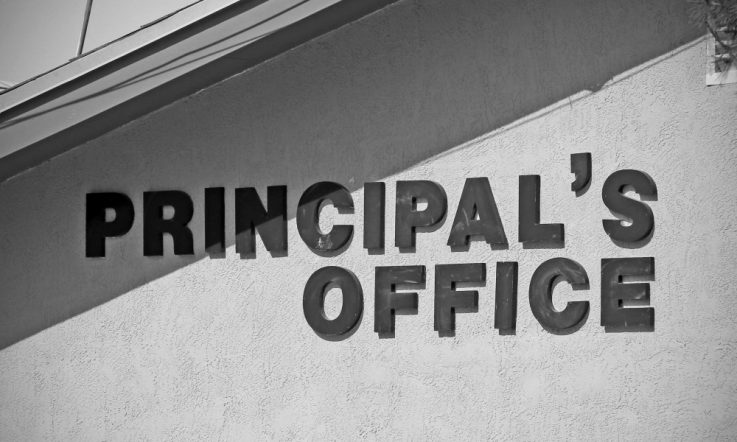Our latest instalment of Teacher's Bookshelf takes a sneak peek at the new book from Helen Timperley, Fiona Ell, Deidre Le Fevre and Kaye Twyford – Leading Professional Learning: Practical strategies for impact in schools. In this exclusive extract, the authors discuss how school leaders can support others to take risks.
Emotion, uncertainty and vulnerability are experienced differently by different people. Teachers engaging in the same professional learning initiative, for example, can have vastly different emotional reactions, with one teacher feeling excited while another might feel highly anxious. The problem is that the teacher who feels highly anxious might disguise this by acting as if overconfident, not asking for help or behaving as if they don't care. This is in part because, in society, being open about one's emotional reactions is not encouraged – we are encouraged to appear invulnerable.
I think that climate of supporting – you know, not being judgemental on what you're doing. Yeah, you've got to accept that people will stuff up if you want them to take risks. That's what risks are about isn't it? It's that supportive – whether it's implied or explicit, it doesn't really matter. You soon learn. You can be safe . . . There still are times when you become defensive. Making mistakes, it's not very comfortable but it's not – yeah it's part of the risk management too. As I said, it sent me back to, ‘Let me make mistakes, don't punish me for them. Don't bring them up again; just let me make them. But yeah, if I'm making the same one time and time [again], maybe then you could give me a little nudge, but just let me learn'. School Leader, Yr 7-12 school
It is important that you, as a leader, know your teachers as ‘learners', just as you expect them to know their students as learners. In doing so, you can understand their reactions and work with them to figure out ways to engage and support them to take risks and develop a mindset that taking risks is a part of learning. Interestingly, young people are encouraged to take risks, and yet as adults, we often want to play it safe. The difficulty in judging just how to balance challenge and risk is summed up by this deputy principal:
It's the balance, it isn't about making them [the participants] happy. I'm not fooled into thinking I want people to come to me and say, ‘Oh, that was so good, I learned so many things to do and I just really like it'. It's not about making them happy or feel good. It's about learning. I don't know enough, I just go by gut about balance. It's like I walk this rope, I'm not going to shove them to the edge, but I have to find that edge; that's different for individuals, for groups. So, I'm pushing towards it, pushing towards the edge, which is enough disequilibrium to make them have to think, rethink, begin to wonder about stuff, but not enough to have them fall. And I'm ready to catch them if I have pushed too hard. Deputy Principal, Yr 8-12 school
This leader spoke of encouraging teachers to take risks . . . but not so many that they would ‘fall off the edge'. Those leading the learning and change process need to work with teachers (and leaders) to understand and process their emotions and feelings of vulnerability. This notion of needing to feel secure in order to struggle in front of others is an important one.
One way of thinking about this is to unpack each person's ‘learning zone' and where they can take the next step with support. This idea of the learning zone builds on the well-known theoretical notion of the ‘zone of proximal development' introduced by Vygotsky (1978). Creating and maintaining the ‘learning zone' means finding the place for each individual teacher where they are challenged beyond their comfort zone to learn and take risks, but not pushed to a place where they feel unsafe and are no longer learning.
What is important here is the provision of opportunities to learn and change accompanied by the necessary level of trust and support to function in the learning zone. Teachers in a primary school observed the parallels between how teachers expect students to have safe spaces to try and fail, and to try again and the professional learning spaces in which they were expected to do the same. Two teachers from a K-6 school reflected:
I feel that it is necessary to take risk in order to learn in terms of moving outside our comfort zones, just as we encourage children to.
We ask children to take risks with their learning but provide them with the tools and support . . . [that] will enable them to achieve success. The same should be true for teachers' professional development.
Making these parallels explicit for teachers may help them to construct learning environments for themselves that allow them to take deliberate action to make professional learning a safe space for, and to experiment with, change while reducing uncertainty and perceptions of risk.
References
Vygotsky, L. S. (1978). Mind in society: The development of higher psychological processes. Cambridge, MA: Harvard University Press.
As a school leader, do you support and trust staff members to take risks and grow?
How well do you know your own teachers as learners?
When providing professional development opportunities to learn and change, do you consider how to challenge teachers just beyond their comfort zone, without pushing them too far?
Leading Professional Learning: Practical strategies for impact in schools, by Helen Timperley, Fiona Ell, Deidre Le Fevre and Kaye Twyford, is published by ACER Press and available to order now via the link.



